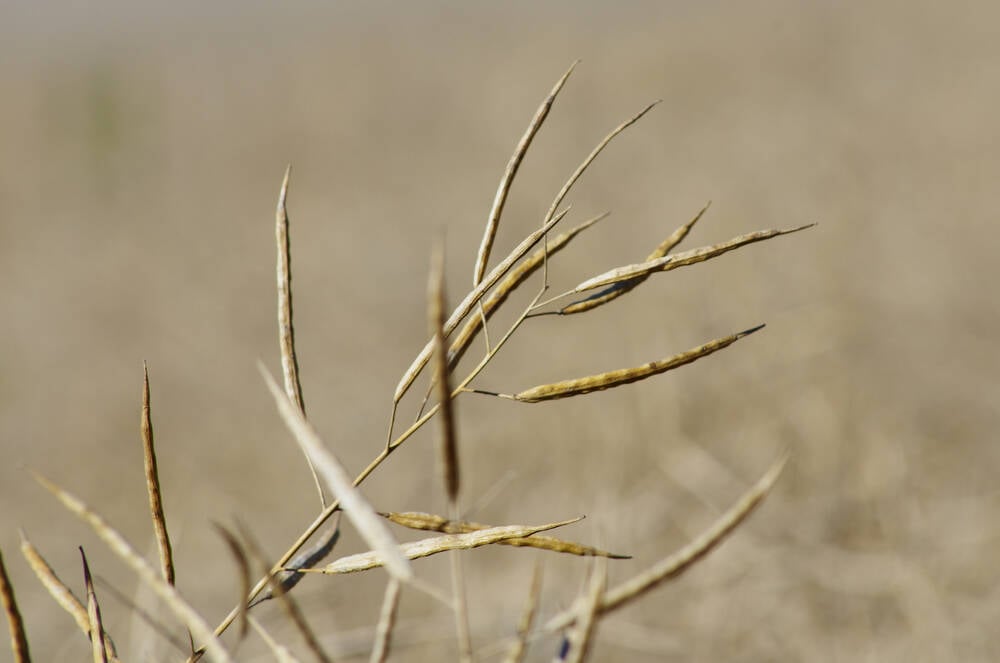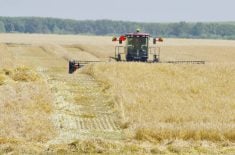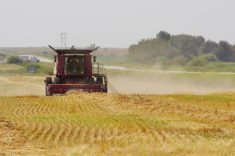It looks like 2024 was a good year for peas and cereals and not quite as good for canola.
Why it matters: Many Manitoba crops, including soybeans, barley and oats, were punching above Statistics Canada expectations, according to initial estimates in early October.
According to the Oct. 16 Manitoba Agriculture crop report, canola yields ranged from 25 to 60 bushels an acre, with averages ranging from 30-45 bu./acre, with 98 per cent of the crop harvested.
Read Also

Manitoba boosts stake in cereals centre to $23.5 million
Premier Wab Kinew said the additional project funds will help ‘Trump-proof’ the provincial economy.
In its crop predictions in September, Statistics Canada expected to see averages close to the higher end of that range. It put expected canola harvest in Manitoba at 41 bu./acre, just over the 10-year average of 40.64 bu./acre from 2014-23.
A wet and cool spring, coupled with other weather-related stressors, led to thinner stands in some fields, according to Sonia Wilson, oilseed specialist with Manitoba Agriculture.
Although early seeded canola benefitted from early moisture and pushed through cooler temperatures, later-seeded fields faced more difficulty.
“With the amount of moisture that was sitting there, and then also the cold temperatures, it really was … kind of like a vector that encouraged … disease,” Wilson said.
Weather conditions were also ideal for flea beetles, she added, since canola was stuck at a younger stage for longer. Later-seeded fields rebounded well when warmer weather came.
Weed competition was another issue. Excess moisture delayed weed control efforts and allowed weeds to thrive in fields with thinner stands.
“The weeds kind of thrived, having access to light, having access to moisture and not being controlled,” Wilson said. “That was definitely a tough fight for some fields.”
Canola’s branching ability helped close the canopy later in the season.
Field peas
Pea yields were impressive, according to Lionel Kaskiw, crop production extension specialist with Manitoba Agriculture.
Good moisture in spring got the crop off on a strong footing, he noted, and crops developed quickly enough to outrun the worst of disease pressure, which is always a concern in a wet spring.
Harvest was relatively smooth and crops came off early, allowing producers to space their workloads.
“Everything was done well before we were into spring (wheat) and cereal harvest,” said Kaskiw, adding that pea yields were above normal.
Initial data, as reported by the province’s weekly crop reports in September, with 98 per cent of the pea crop harvested, indicated pea yields at 30 to 65 bu./acre. No averages were estimated at that time.
Statistics Canada predicted 2024 yields at just under 44 bu./acre. The agency reported Manitoba peas at 49.9 bu./acre in 2023 and 50.3 bu./acre the year before. From 2014-23, pea yields in Manitoba averaged 44.68 bu./acre.
The 2024 season went so well that Kaskiw expects more peas will be grown in the province next year.
Other crops
Wheat crops benefitted from early seeding and favourable spring conditions, Kaskiw said. Excess moisture was a noted challenge for some seeding operations and for spraying. Other challenges included hail and windstorms.
“When a lot of canola got into the ground, the wheat was already up and already growing, so I think it was able to handle some of those changes in the weather and was able to get going and stay growing,” Kaskiw said. “I think that was one of the benefits of our cereal crops.”
Cereal acres did suffer lodging later in the season due to strong winds and heavy rains, making harvest difficult.
Lodging challenges prompted some producers to reconsider soil management and fertilizer strategies. According to Kaskiw, more farmers are taking a closer look at regulators and at soil sampling to avoid over-fertilizing crops.
“I think producers are definitely opening their books and looking at how they managed a crop last year, and seeing the kind of decisions they can make this (coming) year for just getting a better overall stand and strength to stand.”
Kaskiw also noted the soybean crop is expected to be one of the better ones in recent memory, despite early moisture stress. With harvest nearly complete as of Oct. 16, early yield estimates were 35-60 bu./acre, with averages between 40 and 45 bu./acre.
















